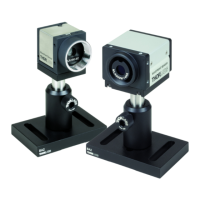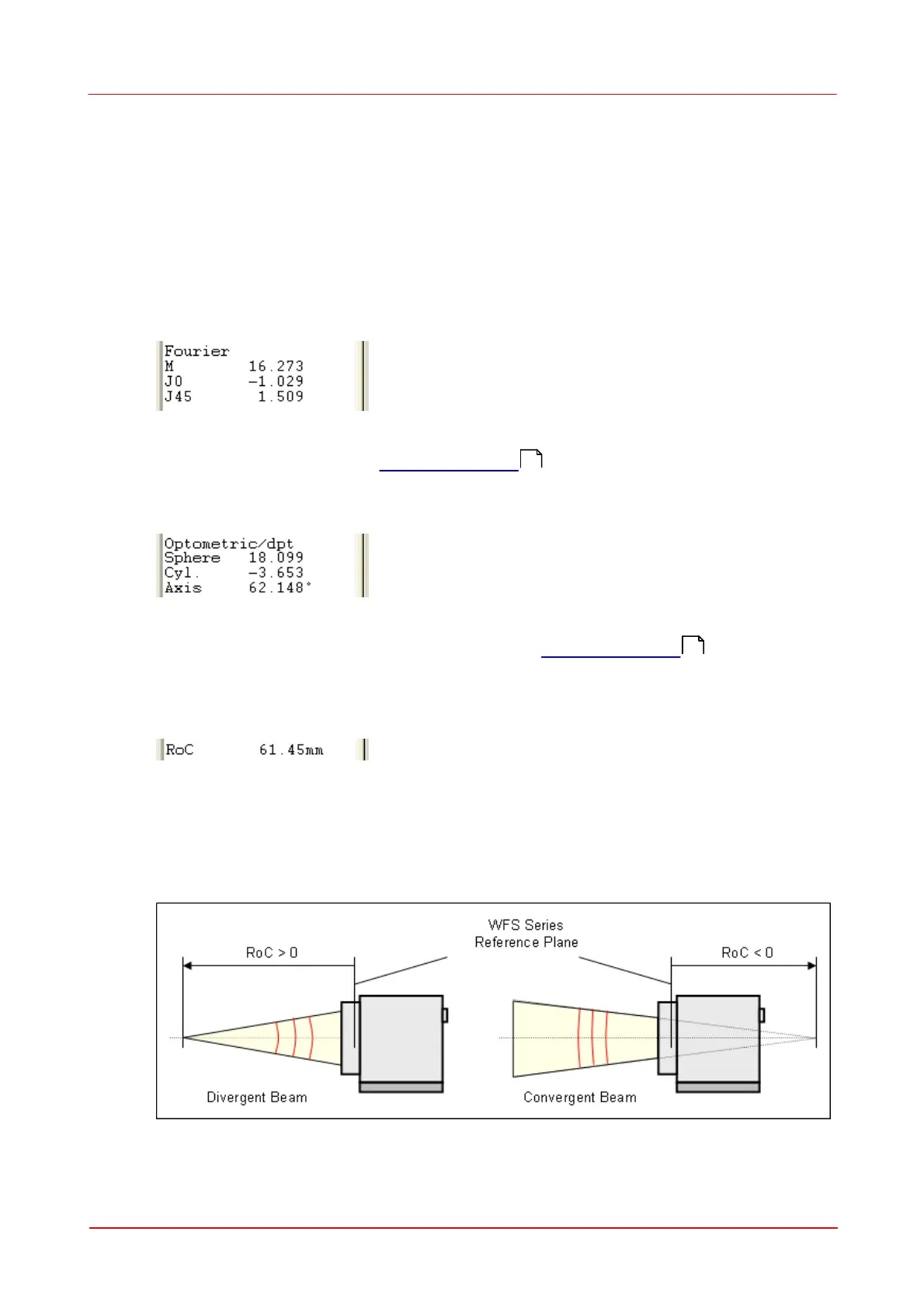© 2007-2012 Thorlabs GmbH
89Operating Instruction
the calculated wavefront statistics refer to the selected wavefront (Measured,
Reconstructed or Difference).
PV is the total Peak-to-Valley value, that is the maximum variance of the
wavefront in the observed area.
RMS is the Root Mean Squared average value and
wRMS is the intensity weighted Root Mean Square average value. Here
higher intensity spots in the pupil center have more weight than lower
intensity spots away from the center.
Fourier Constants
Fourier constants are M, J0 and J45 and are derived from the Zernike coefficients.
Depending on setting in the Zernike Fit Setup panel, Zernike orders up to 2, 4 or
6 go into these constants.
Optometric Constants
Optometric constants are Sphere, Cylinder (in diopters) and the axis angle of the
cylinder in degrees. Depending on setting in the Zernike Fit Setup panel, Zernike
orders up to 2, 4 or 6 go into these constants.
Radius of Curvature RoC
This parameter is based on the 5th Zernike term 'Defocus' and describes the
degree of curvature of the measured wavefront. All other Zernike terms and
corresponding wavefront deformations are left unnoticed and only the spherical term
is considered. The Radius of Curvature (RoC) is identical to the distance from a
point source which is emitting a spherical wavefront.
Positive RoC distances are standing for divergent spherical wavefronts where the
8
3
83

